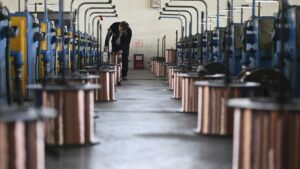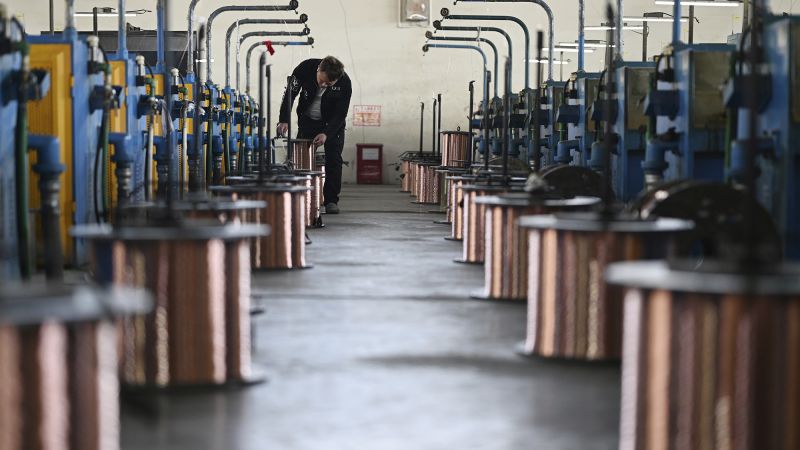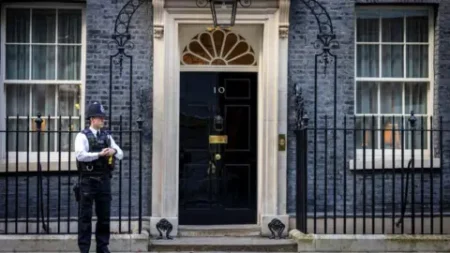On a significant Tuesday, President Donald Trump announced a sweeping economic measure: a new 50% tariff on all copper imports. This announcement has left many wondering when exactly these tariffs will come into effect, as the administration has yet to provide clarity on the implementation timeline.
During a Cabinet meeting, President Trump stated, “Today we’re doing copper,” confirming his belief that the tariff rate would indeed reach 50%. This declaration adds another layer to Trump’s ongoing trade policy, which has already seen several tariffs imposed during his current term. This latest move represents the fourth across-the-board tariff levied by his administration, reinforcing Trump’s commitment to a protectionist economic strategy.
As of now, various imported goods are facing hefty tariffs, with cars and car parts subjected to a 25% tariff. Additionally, steel and aluminum imports are facing a striking 50% tariff. The extensive nature of these tariffs illustrates the Trump administration’s aggressive stance on protecting American manufacturing and industrial sectors from foreign competition.
The impetus behind this latest announcement stems from an investigation ordered by Trump in February under Section 232 of the Trade Expansion Act, focusing specifically on copper imports. Copper plays a vital role in numerous industries, including electronics, machinery, and automotive manufacturing. As such, the implementation of hefty tariffs on copper could have ripple effects across multiple sectors, potentially driving up costs for consumers and manufacturers alike.
Financial markets reacted swiftly to the news of the copper tariff. Prices for copper surged dramatically, reaching all-time highs following Trump’s announcement. The most actively traded copper futures contract in New York experienced a noteworthy climb, increasing by as much as 15%, culminating in a record price of $5.66 per pound. This sharp increase reflects not only the immediate impact of the proposed tariffs but also the anxiety and anticipation surrounding future costs of imported materials.
The overall market dynamics have changed significantly; copper prices have risen by an impressive 38% this year alone. Such an increase is indicative of widespread stockpiling efforts by businesses aiming to secure copper supplies before the tariffs kick in. This trend suggests that companies may be attempting to mitigate the financial impact of the impending tariffs by acquiring bulk materials before prices escalate further.
The broader implications of this tariff policy raise questions about its potential effects on the economy. While the administration aims to bolster American industries by imposing tariffs, critics argue that such measures can lead to increased costs for consumers and might provoke retaliatory actions from other countries. As businesses absorb these tariffs and adjust their pricing strategies, there is a palpable concern about how these shifts in trade policy will ultimately affect the American consumer and larger economic landscape.
In light of these developments, it is essential to stay informed about the situation, as it continues to evolve. The administration’s approach to copper tariffs is only one aspect of its broader trade agenda and may lead to additional tariffs on other commodities in the future. Thus, stakeholders from various sectors—especially those reliant on copper and related materials—are encouraged to remain vigilant and adaptable in the face of changing economic policies.
As this story unfolds, further updates will provide more clarity on the timeline and ramifications of the new copper tariffs. The implications for investors, manufacturers, and consumers alike will be significant and will warrant close attention as this developing scenario continues to materialize.











